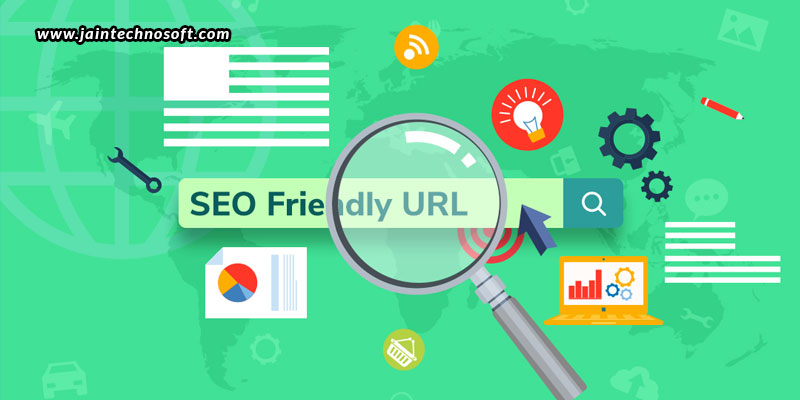Did you know that a website URL structure can help you fetch more clicks? Yes, if created properly, keeping SEO aspects in mind, your URL alone can help bring in a significant number of clicks!
Consider how you would search online. You would first type in whatever you wish to search for into the search bar of the search engine. When you get a list of relevant results, you’re then likely to first read the title tags of the listings, and then you’ll consciously or sub-consciously look at the URL. When you think a particular title tag and URL seem to be one that can answer your query, you’ll then click on the listing. Moreover, you’re likely to only go through the first three to five listings first. So, this makes it clear that having a good URL structure can help you gain attention; and if you create it keeping SEO aspects in mind, you’re likely to rank higher, meaning even more exposure!
But, how do you do that? If you think it’s pretty easy to decide on a URL, remember, your URL can create a lot of trouble if done wrong! Google has lots of ranking factors, out of which some important ones related to the URL include the length of the URL, the path of the URL, and the inclusion of the keyword in the URL. Considering all of this and more, here are 10 easy tips that can help you create perfectly SEO-friendly URLs.
Tip 1 – Match your URL to the page title
As we mentioned above, a user first goes through the title tags as soon as relevant listings pop up after entering a search. And, Web pages generally have their page title same as their title tag. This is why it is better if your URL is consistent with your page title, so that your page can gain better rankings in SERPs. The best way to do this is by creating a permalink that summarizes the topic of the page.
Tip 2 – Keep your URL short and simple
It’s always better to keep your URL as short as possible, and easy to understand. Even though your page title may be long, try keeping the URL coordinated, yet a little shorter. That’s because long URLs may confuse the web crawlers as to what the page is about. So, you must eliminate all possible unnecessary words, thus the possibilities of misunderstanding the intent of the page too. Keep it short, simple, and easy-to-read.
Tip 3 – Remove unnecessary clutter
This tip goes along with the preceding one. In order to keep the URL short and simple, you need to remove all unnecessary clutter, which includes needless words, stop words, punctuations, special characters, etc. All such unnecessary elements can distract web crawlers, thus impacting your ranking on SERPs.
Tip 4 – Replace underscores with hyphens
You’ll have multiple words in your URL, which need to be separated not with a space, but instead with the help of a certain element. The two best separation elements include hyphens and underscores. If you think you can use any of the two to separate your words, let us tell you that Google doesn’t treat hyphens and underscores as the same, when indexing URLs. The search engine giant views the hyphen as a word separator that improves URL comprehensibility, while it treats an underscore like a word joiner. With this understanding, it’s obvious that using hyphens is better than using underscores to separate your words, isn’t it?
Tip 5 – Use lowercase alphabets
Try reading a sentence with all capital alphabets, and then read the same sentence with lowercase letters. Which of the two is easier to read? Certainly, the latter. This is the reason you must always use lowercase alphabets in your URL to make it easily readable.
Tip 6 – Never include dates
Having a date included in the URL not only makes it longer, but also makes it look ugly, that too, with no special need. Why include a date in the URL then? Moreover, if you include a date in your URL, it’ll make it problematic in updating your content. Whenever you want to update your content in the future, the date in the URL will contradict your actions. Yes, you could certainly 301 redirect your page to a new URL, but why even take the pains to do that!? Isn’t it better you just eliminate the date altogether?
Tip 7 – Choose HTTPS over HTTP
The extra “S” in HTTPS in itself clear states that it stands for “Security”. There should be no reason you should argue why you should opt for HTTPS then. Cyber crime and identity threat pose serious threats to internet users, if they aren’t using a secure connection. With the exponential rise in the monetary damage caused by cyber-attacks, it is always better to use HTTPS instead of HTTP. The website data with HTTPS is encrypted, and thus, secure. Along with ensuring user security, HTTPS is also a ranking factor; and all you have to do is get an SSL certificate for your website.
Tip 8 – Avoid dynamic URLs
Viewing from an SEO standpoint, it is always better to leave out dynamic URLs, unless really very important. That’s because they can cause trouble as they make the URL longer, ugly, and difficult to read. This will not only decrease your organic CTR, but will also have your URL to get truncated in search results.
Tip 9 – Use canonical tags appropriately
Canonical tags can help search engines know about the originality of the page to avoid duplicate content related problems later. They inform search engines about which URL should be used to rank in SERPs.
Tip 10 – Make an XML sitemap
An XML sitemap can help web crawlers by proving to be a rundown of your site’s URLs that you submit to them. Thus, web crawlers can use it as a source of perspective when picking canonical URLs on your webpage, while also making it easier for search engines to discover your website pages all the more effectively.
So, you may have thought that creating a URL is a very easy task, but how do you think about it now!? You can clearly see how precarious the procedure of URL structuring is. It is important to appeal both web indexes and human users; thus requiring a more specialized perspective, for which you can take assistance from professionals offering SEO services in Bangalore, who can help you with every possible SEO aspect for your website, other than your URLs too!




